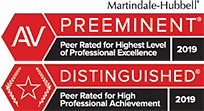Trials, as a method of dispute resolution, have been trending downward for years. For example, the number of tort trials in the federal courts declined by 80% from 1985 to 2003. Of the 98,786 tort cases resolved in federal court in 2002 and 2003, only 1,647, or 1.7%, were decided by trial. The other 98.3% of the cases resolved in those years were either dismissed prior to trial, or settled. The situation is similar in the state courts. Nationwide, the number of tort trials decided in the state courts after a trial declined 23% from 1992 to 2001. Of the states reporting in 2004, the percentage of civil cases decided by trial in the state courts was ½ of 1%. (For those readers who love to peruse statistics, I got the above information from Center for Justice & Democracy and Bureau of Justice Statistics Civil Justice Statistics.)
There are similar outcomes in the New Jersey courts. Last year, 95,000 new civil cases were filed statewide. In addition, 68,000 new matrimonial cases were filed in the same period. Of those cases, about 29% were resolved in mediation in NJ. There is evidence that mediation lays the groundwork for settlement later even if the cases do not settle directly in mediation. The judicial report for the year July 2007 through June 2008 was recently published by the Administrative Office of the Courts.
Like other trial attorneys, I have literally spent weeks in trial preparation. But I have never spent anywhere near that long preparing for a mediation, settlement negotiation or other type of alternative dispute resolution session. I’m sure the same is true for other attorneys. However, since the great majority of cases are resolved before trial during mediation or in settlement negotiations while fewer and fewer cases are tried, attorneys should prepare for mediation with the same seriousness and discipline they display in preparing for trial. Clients should be informed of the unlikelihood of trial and encouraged to participate actively in preparation for mediation.
But how do you prepare for mediation? It is not something attorneys are trained for or accustomed to doing. I have some suggestions:
- You greatly increase the chances of success in mediation when you make the mental transition from thinking like an advocate in pursuit of a “win” to thinking like a counselor seeking to create value for both parties.
- Determine what basic information you need from the other party, if any. Think about what the other party will need from your client. Then, make a timely exchange of basic documents and information prior to the mediation.
- Prepare your client for mediation. The client should understand ahead of time the general nature of the mediation process: what role the mediator plays, what role the lawyer plays and that confidential information may be disclosed because it is protected in the mediation. In addition, the client should have the benefit of the lawyer’s evaluation of the case, including case weaknesses. Most importantly, the client should understand that there is a real opportunity to resolve the case in the mediation.
- Help the client identify his/her real interests by asking the client to tell you what he or she wants to achieve, listening to the answers and examining each goal identified by asking “Why”? “Why do you want to achieve that goal?” Find out what really motivates the client. Asking questions to uncover interests is like peeling the layers of an onion.
- Listen closely to the other party during the mediation. When the other party states his/her position, they are giving you valuable information about what they want. Invite them to tell you more by asking: “Why do you want that?” “What is the problem?” “What are your concerns?”
- Explore the possible resolutions to the dispute. Assess your client’s BATNA (Best Alternative to a Negotiated Agreement). Your BATNA is the reality your client will face if you reach no deal in the mediation. After analyzing your BATNA, calculate your reservation value, or the lowest offer you would be willing to accept.
- Assess the other party’s BATNA. Think through the alternatives that the other party will face if no deal is reached. Using that information, calculate the other party’s reservation value.
- Evaluate the ZOPA (Zone of Possible Agreement), or the range of all possible settlements which would be acceptable to both parties. The ZOPA falls between the reservation values of both parties.
- Prepare a mediation game plan in advance. Decide whether you should make the first offer, how you will respond to offers made by the other side, and how you will use the joint sessions.
- Use the mediator to educate your client about the strength and weaknesses of his/her case. If your client has unrealistic expectations, let the mediator deflate them. If your client is absolutely convinced of an outcome, let the mediator undercut that conviction. Help the mediator to conduct a similar educational process with your opponent. It might be a good idea to submit a summary of the facts and legal issues in the case to the mediator in advance.
Finally, it’s important to keep track of each mediation session. Identify what worked in the session and what didn’t work. Then, review the file prior to your next mediation session.
(I got ideas for the above suggestions from a variety of sources, including Getting to Yes, Fisher & Ury; Getting Past No, Ury; Negotiation Genius, Malhotra & Bazerman; 3D Negotiation, Lax & Sebenius; and, The Complete Guide to Mediation, Mosten)
Categories
- Affordable Care Act
- Alzheimer's Disease
- Arbitration
- Attorney Ethics
- Attorneys Fees
- Beneficiary Designations
- Blog Roundup and Highlights
- Blogs and Blogging
- Care Facilities
- Caregivers
- Cemetery
- Collaborative Family Law
- Conservatorships
- Consumer Fraud
- Contempt
- Contracts
- Defamation
- Developmental Disabilities
- Discovery
- Discrimination Laws
- Doctrine of Probable Intent
- Domestic Violence
- Elder Abuse
- Elder Law
- Elective Share
- End-of-Life Decisions
- Estate Administration
- Estate Litigation
- Estate Planning
- Events
- Family Law
- Fiduciary
- Financial Exploitation of the Elderly
- Funeral
- Future of the Legal Profession
- Geriatric Care Managers
- Governmental or Public Benefit Programs
- Guardianship
- Health Issues
- Housing for the Elderly and Disabled
- In Remembrance
- Insolvent Estates
- Institutional Liens
- Insurance
- Interesting New Cases
- Intestacy
- Law Firm News
- Law Firm Videos
- Law Practice Management / Development
- Lawyers and Lawyering
- Legal Capacity or Competancy
- Legal Malpractice
- Legal Rights of the Disabled
- Liens
- Litigation
- Mediation
- Medicaid Appeals
- Medicaid Applications
- Medicaid Planning
- Annuities
- Care Contracts
- Divorce
- Estate Recovery
- Family Part Non-Dissolution Support Orders
- Gifts
- Life Estates
- Loan repayments
- MMMNA
- Promissory Notes
- Qualified Income Trusts
- Spousal Refusal
- Transfers For Reasons Other Than To Qualify For Medicaid
- Transfers to "Caregiver" Child(ren)
- Transfers to Disabled Adult Children
- Trusts
- Undue Hardship Provision
- Multiple-Party Deposit Account Act
- New Cases
- New Laws
- News Briefs
- Newsletters
- Non-Probate Assets
- Nursing Facility Litigation
- Personal Achievements and Awards
- Personal Injury Lawsuits
- Probate
- Punitive Damages
- Reconsideration
- Retirement Benefits
- Reverse Mortgages
- Section 8 Housing
- Settlement of Litigation
- Social Media
- Special Education
- Special Needs Planning
- Surrogate Decision-Making
- Taxation
- Technology
- Texting
- Top Ten
- Trials
- Trustees
- Uncategorized
- Veterans Benefits
- Web Sites and the Internet
- Webinar
- Writing Intended To Be A Will







Vanarelli & Li, LLC on Social Media